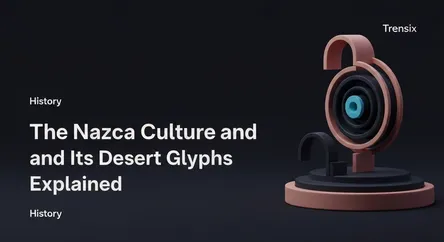History
The Nazca Culture and Its Desert Glyphs Explained

Discover the Nazca Culture of ancient Peru, famous for its mysterious desert lines, vibrant pottery, and ingenious irrigation in an arid land.
What is it?
The Nazca culture flourished along the arid southern coast of Peru from approximately 100 BCE to 800 CE. Strongly influenced by the preceding Paracas culture, the Nazca were not a single unified state but likely a collection of chiefdoms that shared a common culture. They were masters of their desert environment, engineering remarkable underground aqueducts known as puquios to support their agriculture, many of which are still functional today. The Nazca are also renowned for their highly polished, polychrome pottery featuring at least 12 distinct colors, and their technically complex textiles. However, their most famous legacy is the Nazca Lines, enormous geoglyphs etched into the desert floor.
Why is it trending?
The Nazca Lines are the primary reason for the culture's enduring fame and trending interest. These massive figures of animals, plants, and geometric shapes are so large they are best appreciated from the air, a fact that has fueled speculation and mystery for decades. While popular theories have suggested alien contact, researchers believe the lines served religious purposes, possibly as ceremonial pathways or rituals to gods associated with water and fertility—a vital concern in the desert. Recent discoveries of hundreds of new geoglyphs, often found using drones and artificial intelligence, have reinvigorated public and scientific curiosity, deepening the enigma of their true purpose and scale.
How does it affect people?
The Nazca culture provides a profound link to the ingenuity of ancient peoples. Their puquios represent a sophisticated solution to water management in one of the driest places on Earth, offering insights into sustainable agriculture. Their art, especially the detailed designs on pottery and textiles, offers a window into their daily life, rituals, and beliefs, enriching our understanding of pre-Inca history. The Nazca Lines, designated a UNESCO World Heritage Site in 1994, continue to be a major cultural and tourist landmark. They challenge our perceptions of ancient technology and symbolism, reminding us that past civilizations hold mysteries that continue to inspire awe and scientific investigation today.